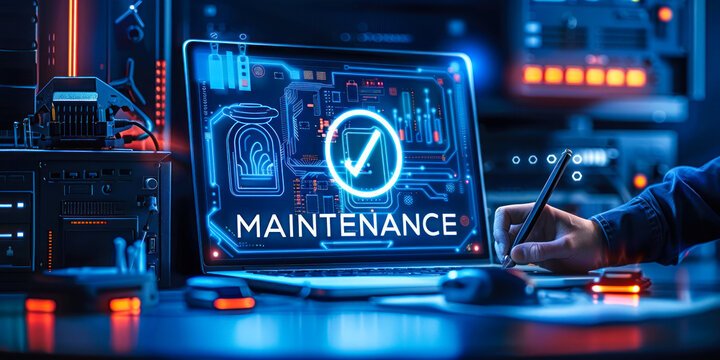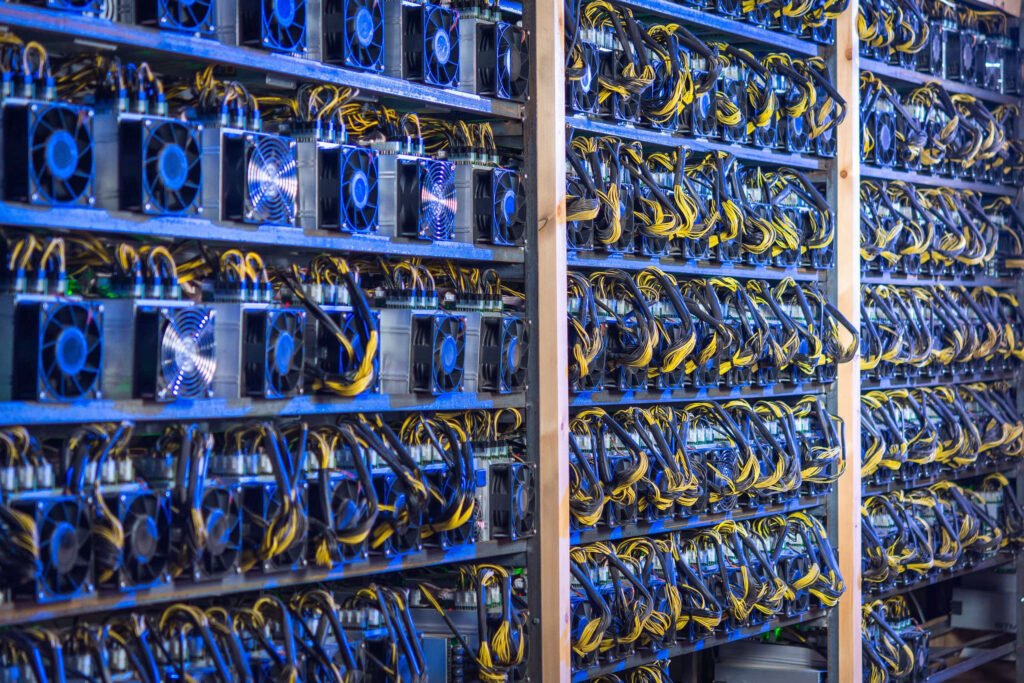The cryptocurrency mining landscape continues to evolve rapidly, and finding the best Bitcoin ASIC miner 2025 has become more critical than ever for both newcomers and experienced miners. With Bitcoin trading above significant price levels and mining difficulty reaching new heights, choosing the right ASIC (Application-Specific Integrated Circuit) mining hardware can make the difference between profitable operations and costly mistakes.
In today’s competitive mining environment, the best Bitcoin ASIC miner 2025 options combine exceptional hash rates, energy efficiency, and reasonable return on investment timelines. Whether you’re looking to start your first mining operation or upgrade your existing hardware, this comprehensive guide will help you navigate the complex world of Bitcoin mining equipment and make informed decisions that maximize your mining profitability.
Modern Bitcoin mining requires specialized hardware capable of performing trillions of calculations per second while maintaining optimal power efficiency. The leading manufacturers have introduced groundbreaking models that push the boundaries of mining technology, offering unprecedented performance levels that were unimaginable just a few years ago.
Top Bitcoin ASIC Miners of 2025 Market Leaders
Bitmain Antminer S21 XP: The Premium Choice
The Bitmain Antminer S21 XP stands out as arguably the best Bitcoin ASIC miner 2025 for large-scale operations. This powerhouse delivers an impressive 270 TH/s hash rate while consuming 3,645 watts of power, resulting in an excellent efficiency ratio of approximately 13.5 J/TH.
What makes the S21 XP exceptional is its advanced cooling system and robust build quality. The miner features improved fan designs that reduce noise levels while maintaining optimal operating temperatures. Professional mining operations particularly appreciate its reliability and consistent performance under demanding conditions.
The S21 XP incorporates cutting-edge chip technology that maximizes computational power while minimizing heat generation. This translates to lower cooling costs and extended hardware lifespan, making it an excellent investment for serious miners who prioritize long-term profitability over initial cost savings.
Bitmain Antminer S21 Pro: Balanced Performance
For miners seeking a balance between performance and accessibility, the Antminer S21 Pro represents one of the best Bitcoin ASIC miner 2025 options in the mid-to-high-end category. With a hash rate of 234 TH/s and power consumption of 3,510 watts, it offers an efficiency of 15 J/TH.
The S21 Pro strikes an excellent balance between upfront investment and mining returns. Its air-cooled design makes it suitable for various installation environments, from home setups with proper ventilation to commercial mining farms. The unit’s reliability and manufacturer support make it a popular choice among both individual miners and mining enterprises.
This model incorporates many of the same technological advances as its more expensive siblings while remaining more accessible to miners with moderate budgets. The S21 Pro’s performance consistency and lower maintenance requirements contribute to its strong reputation in the mining community.
WhatsMiner M60S: The Efficiency Champion
The WhatsMiner M60S has earned recognition as one of the most energy-efficient options among the best Bitcoin ASIC miner 2025 selections. While specific technical specifications vary by configuration, this miner excels in environments where electricity costs are a primary concern.
WhatsMiner’s reputation for producing reliable, efficient hardware makes the M60S particularly attractive to miners operating in regions with higher electricity rates. The company’s focus on optimization and thermal management results in miners that can maintain peak performance while minimizing operational costs.
The M60S features advanced power management systems that automatically adjust performance based on operational conditions. This intelligent approach to power consumption helps miners maintain profitability even during periods of increased network difficulty or fluctuating Bitcoin prices.
Understanding Mining Profitability in 2025

Current Market Dynamics
Bitcoin mining profitability in 2025 depends on multiple interconnected factors that miners must carefully consider when selecting the best Bitcoin ASIC miner 2025 for their operations. The relationship between Bitcoin price, network hash rate, and electricity costs creates a complex equation that determines mining success.
Recent market analysis indicates that mining one Bitcoin now costs significantly more than in previous years, with estimates suggesting costs exceeding $111,000 when using grid-average electricity prices of $0.13/kWh. This dramatic increase highlights the importance of choosing efficient mining hardware and securing access to low-cost electricity.
The Bitcoin halving event has further complicated profitability calculations by reducing block rewards while maintaining or increasing network difficulty. Successful miners in 2025 must focus on operational efficiency and strategic planning to maintain positive returns on their investments.
Electricity Cost Considerations
Electricity costs remain the most significant ongoing expense for Bitcoin miners, often determining whether an operation remains profitable long-term. The best Bitcoin ASIC miner 2025 options can only achieve their potential when paired with competitively priced electricity sources.
Professional miners increasingly seek locations with electricity costs below $0.05 per kWh to maintain sustainable operations. Industrial-scale miners often negotiate special rates with utility providers or invest in renewable energy infrastructure to reduce their dependence on traditional power grids.
Home miners must carefully calculate their local electricity rates and potential cooling costs before investing in hardware. While the best Bitcoin ASIC miner 2025 models offer improved efficiency, they still consume substantial amounts of power that can significantly impact residential electricity bills.
Technical Specifications and Performance Metrics
Hash Rate Analysis
Hash rate represents the fundamental measure of mining performance, indicating how many calculations a miner can perform per second. The best Bitcoin ASIC miner 2025 models achieve hash rates measured in terahashes per second (TH/s), with leading units exceeding 270 TH/s.
Higher hash rates directly translate to increased mining rewards, assuming consistent network conditions. However, miners must balance hash rate performance with power consumption and initial hardware costs to optimize their return on investment calculations.
Modern ASIC miners achieve these exceptional hash rates through advanced semiconductor technology and optimized chip designs. The continuous improvement in hash rate performance reflects the ongoing arms race in Bitcoin mining technology development.
Power Efficiency Standards
Power efficiency, measured in joules per terahash (J/TH), has become the critical differentiator among mining hardware options. The best Bitcoin ASIC miner 2025 models achieve efficiency ratings between 13-17 J/TH, representing significant improvements over previous generations.
Improved efficiency directly impacts operational profitability by reducing electricity costs per unit of mining output. Miners operating in competitive environments must prioritize efficiency to maintain margins as network difficulty continues increasing.
The pursuit of better efficiency drives continuous innovation in chip design, cooling systems, and power management technologies. Future improvements in efficiency will likely determine which miners remain competitive in the evolving Bitcoin mining landscape.
Setup and Installation Requirements
Infrastructure Planning
Successfully deploying the best Bitcoin ASIC miner 2025 requires careful infrastructure planning that addresses power supply, cooling, and network connectivity requirements. Modern ASIC miners demand substantial electrical infrastructure capable of supporting their high power consumption levels.
Professional installations require dedicated electrical circuits with appropriate capacity and safety features. Many mining operations utilize 240V power supplies to improve efficiency and reduce electrical losses compared to standard 120V household outlets.
Proper ventilation and cooling systems are essential for maintaining optimal performance and extending hardware lifespan. Mining facilities must design airflow systems that effectively remove heat while minimizing noise levels and energy consumption.
Network Configuration
Modern ASIC miners require stable internet connectivity for communication with mining pools and blockchain networks. The best Bitcoin ASIC miner 2025 models include built-in networking capabilities that simplify configuration and monitoring processes.
Most miners connect to mining pools through standard Ethernet connections, with some models offering Wi-Fi capabilities for increased installation flexibility. Miners should ensure their network infrastructure provides adequate bandwidth and reliability for continuous operation.
Remote monitoring and management capabilities have become standard features that allow operators to track performance, adjust settings, and troubleshoot issues without physical access to mining hardware. These features prove particularly valuable for distributed mining operations and large-scale facilities.
Mining Pool Selection and Strategy
Pool Comparison Factors
Choosing the right mining pool significantly impacts the performance of even the best Bitcoin ASIC miner 2025 hardware. Mining pools vary in their fee structures, payout methods, and geographic distribution, all of which affect mining profitability.
Pool fees typically range from 1% to 3% of mining rewards, with some pools offering additional services or features that justify higher fees. Miners should evaluate pools based on their total cost of participation rather than fees alone.
Pool reliability and uptime directly affect mining earnings, as connection disruptions result in lost mining opportunities. Established pools with strong infrastructure and redundancy systems provide more consistent returns for their participants.
Reward Distribution Methods
Different mining pools employ various reward distribution methods that affect how miners receive compensation for their contributions. The most common methods include Pay-Per-Share (PPS), Pay-Per-Last-N-Shares (PPLNS), and various hybrid approaches.
PPS systems provide predictable, steady payouts based on contributed hash rate, making them popular among miners seeking consistent cash flow. PPLNS methods offer potentially higher rewards during lucky periods but introduce more variability in payout amounts.
Miners using the best Bitcoin ASIC miner 2025 hardware should consider their risk tolerance and cash flow requirements when selecting pool payout methods. Large-scale operations often prefer predictable PPS systems, while smaller miners might accept PPLNS variability for potentially higher returns.
Maintenance and Optimization

Regular Maintenance Procedures
Maintaining peak performance from the best Bitcoin ASIC miner 2025 requires implementing systematic maintenance procedures that address both hardware and software components. Regular maintenance prevents performance degradation and extends equipment lifespan.
Dust accumulation represents one of the most common threats to mining hardware performance. Regular cleaning of fans, heat sinks, and air filters maintains optimal cooling efficiency and prevents overheating issues that can damage expensive components.
Firmware updates from manufacturers often include performance optimizations, security improvements, and bug fixes that enhance mining efficiency. Staying current with firmware releases ensures miners benefit from the latest improvements and maintain compatibility with evolving network protocols.
Performance Monitoring
Effective monitoring systems allow miners to track the performance of their best Bitcoin ASIC miner 2025 hardware and identify potential issues before they impact profitability. Modern monitoring tools provide real-time data on hash rates, temperatures, power consumption, and error rates.
Automated alert systems can notify operators of performance anomalies, allowing for prompt intervention to prevent hardware damage or prolonged downtime. These systems prove especially valuable for remote or unattended mining operations.
Data analysis and trending help identify gradual performance degradation that might otherwise go unnoticed until significant problems develop. Regular performance analysis enables proactive maintenance scheduling and informed decisions about hardware replacement timing.
Cost Analysis and ROI Calculations
Initial Investment Considerations
The upfront cost of acquiring the best Bitcoin ASIC miner 2025 represents a significant investment that requires careful financial planning and analysis. Hardware prices vary considerably based on performance specifications, manufacturer reputation, and market demand conditions.
Beyond the hardware purchase price, miners must account for additional costs including shipping, customs duties, electrical infrastructure upgrades, and cooling system installations. These ancillary costs can significantly impact the total investment required to establish mining operations.
Financing options and leasing programs offered by some manufacturers and resellers can help miners manage cash flow while accessing the latest hardware. However, these arrangements often include interest costs that must be factored into profitability calculations.
Break-Even Analysis
Calculating break-even timelines for the best Bitcoin ASIC miner 2025 requires accurate projections of mining revenue, operational costs, and market conditions. These calculations help miners evaluate investment alternatives and make informed purchase decisions.
Revenue projections must account for network difficulty increases, Bitcoin price volatility, and potential changes in transaction fee levels. Conservative estimates typically assume continued difficulty growth and stable or declining Bitcoin prices to avoid overly optimistic projections.
Operating costs extend beyond electricity to include facility rent, maintenance expenses, insurance, and potential replacement part costs. Comprehensive cost modeling provides more accurate break-even calculations and helps identify the most profitable mining scenarios.
Future-Proofing Your Mining Investment
Technology Evolution Trends
The rapid pace of ASIC mining technology development means that today’s best Bitcoin ASIC miner 2025 models may face competition from even more advanced hardware in the coming years. Understanding technology trends helps miners make strategic decisions about hardware acquisition timing.
Semiconductor manufacturing improvements continue driving efficiency gains and hash rate increases in new mining hardware generations. However, the rate of improvement has begun slowing as manufacturers approach physical limitations of current semiconductor technologies.
Industry consolidation and increased competition among ASIC manufacturers may lead to more standardized features and competitive pricing. These market dynamics could benefit miners through improved hardware accessibility and reduced acquisition costs.
Market Adaptation Strategies
Successful miners develop strategies that allow them to adapt to changing market conditions while maximizing the value of their best Bitcoin ASIC miner 2025 investments. These strategies often include flexible operational approaches and diversification options.
Scalable infrastructure design allows miners to easily add or remove hardware capacity based on market conditions and profitability calculations. This flexibility proves valuable during periods of rapid market change or unexpected shifts in mining economics.
Some miners explore alternative cryptocurrency mining opportunities during periods when Bitcoin mining becomes less profitable. However, this approach requires hardware capable of mining different algorithms, which ASIC miners typically cannot provide.
Also Read: Best Bitcoin Whale Movement News Tracker 2025 Rankings
Environmental and Sustainability Considerations
Energy Efficiency Impact
The environmental impact of Bitcoin mining has become a significant concern that influences both public perception and regulatory approaches. The best Bitcoin ASIC miner 2025 models contribute to improved network energy efficiency through their superior performance per watt ratios.
More efficient mining hardware reduces the total energy consumption required to secure the Bitcoin network, assuming constant hash rate levels. This efficiency improvement helps address environmental concerns while maintaining network security standards.
The geographic distribution of mining operations increasingly focuses on regions with abundant renewable energy sources. Miners utilizing the best Bitcoin ASIC miner 2025 hardware in sustainable energy environments can minimize their environmental footprint while potentially reducing operational costs.
Regulatory Compliance
Evolving environmental regulations may impact Bitcoin mining operations in various jurisdictions, making energy efficiency and sustainability considerations increasingly important for long-term success. Miners must stay informed about regulatory developments that could affect their operations.
Some regions offer incentives for mining operations that utilize renewable energy sources or contribute to grid stability through demand response programs. These opportunities can improve the economics of operating the best Bitcoin ASIC miner 2025 hardware while supporting sustainable practices.
Compliance with local noise regulations, electrical codes, and zoning requirements ensures mining operations can continue without legal complications. Proper planning and installation of mining hardware helps maintain positive relationships with local communities and regulatory authorities.
Conclusion
Selecting the best Bitcoin ASIC miner 2025 requires careful consideration of multiple factors including performance specifications, energy efficiency, initial costs, and long-term profitability projections. The rapidly evolving mining landscape demands strategic thinking and thorough analysis to make successful hardware investments.
The top contenders for the best Bitcoin ASIC miner 2025 title include the Bitmain Antminer S21 XP for maximum performance, the S21 Pro for balanced capabilities, and various WhatsMiner models for energy efficiency. Each option serves different mining scenarios and budget requirements.

